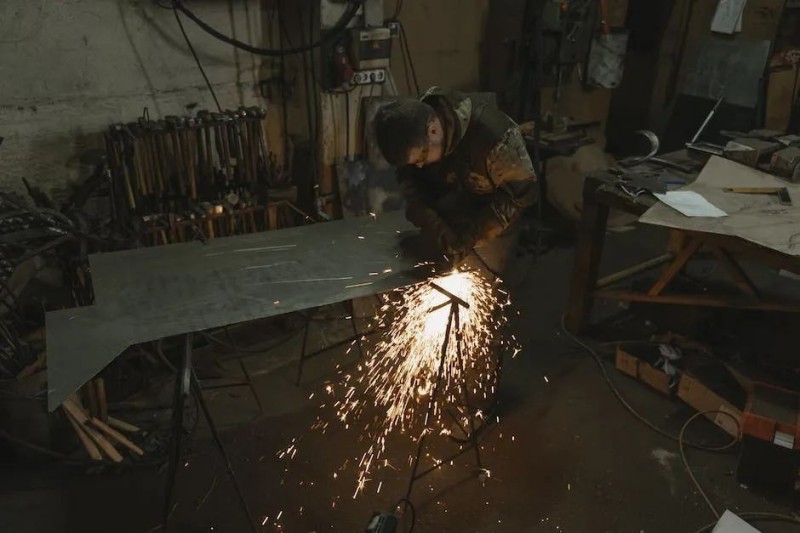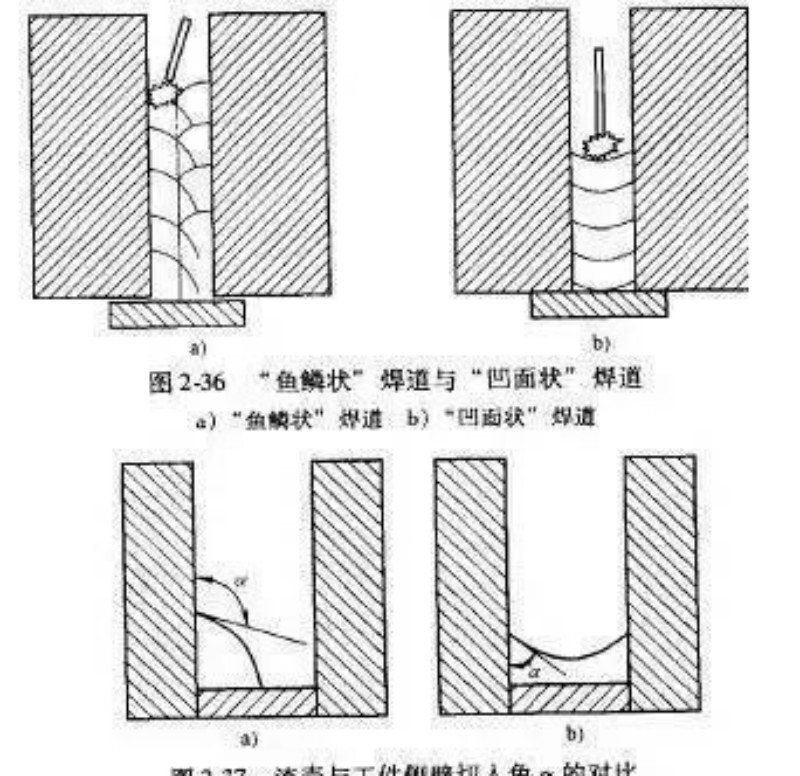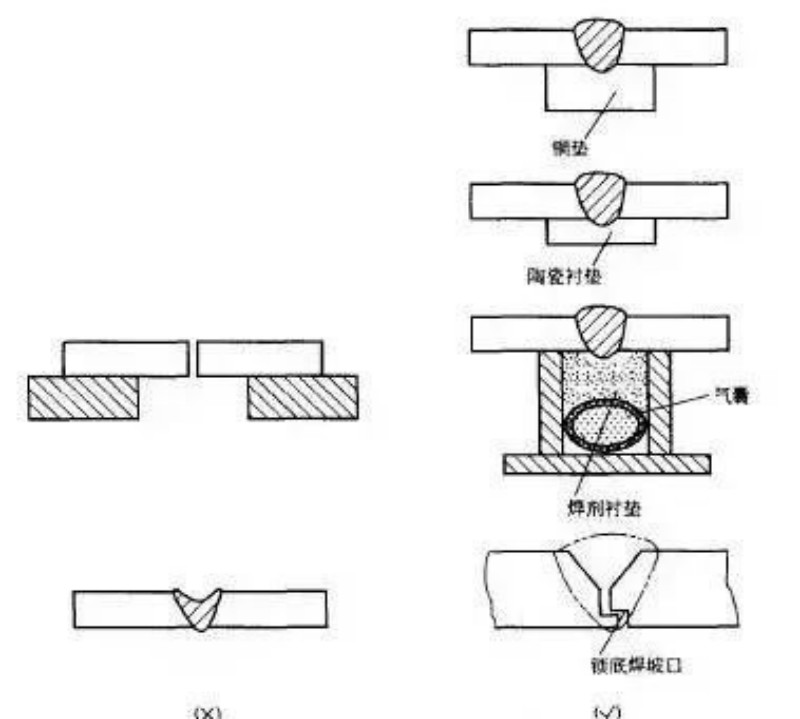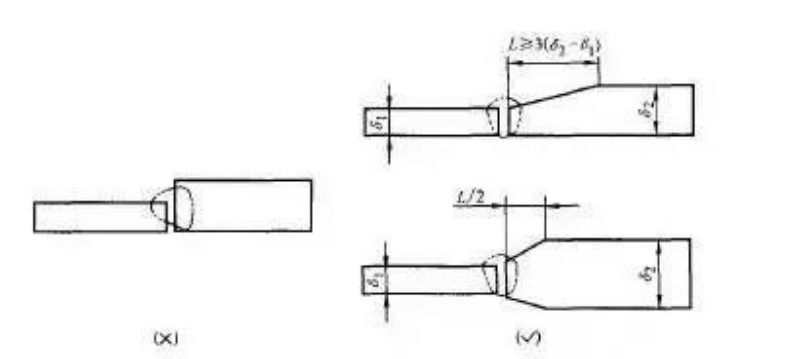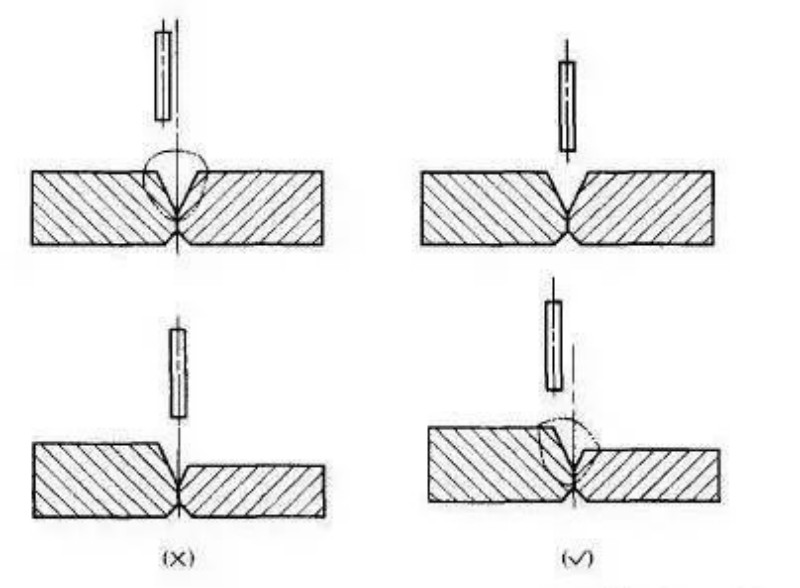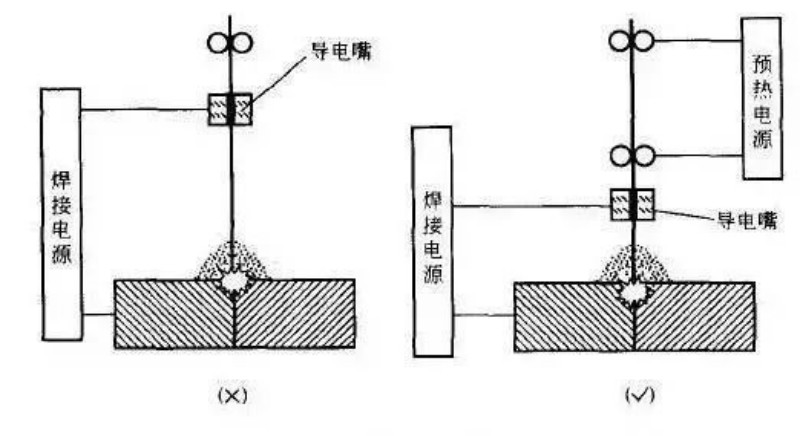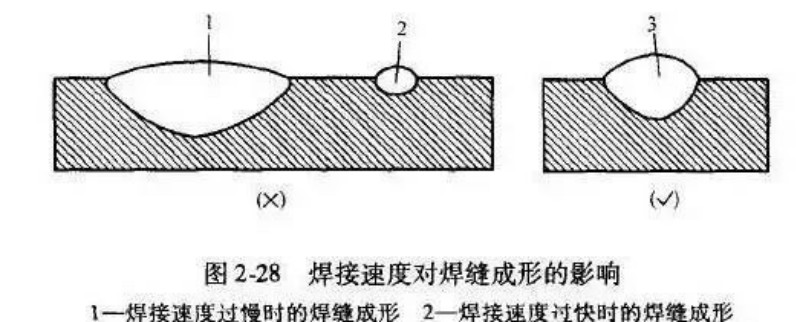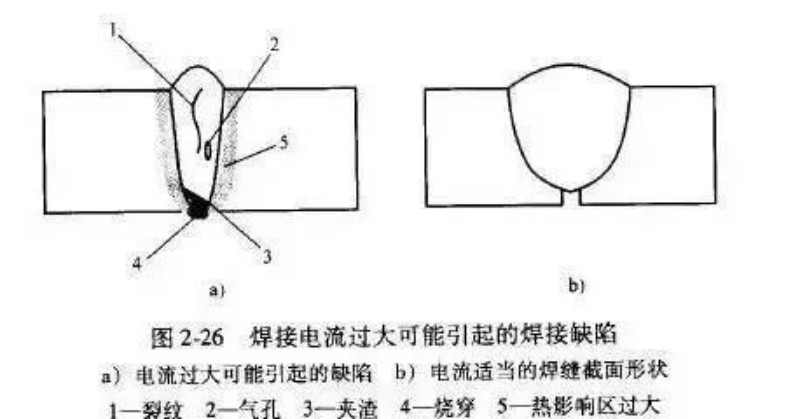The narrow gap welding process belongs to the deep and narrow groove welding process of thick workpieces. Generally, the depth-to-width ratio of the groove can reach 10-15. When the submerged arc welding process is used, there is a problem of slag removal and removal of the slag shell of each weld. In general submerged arc welding processes, it is hoped that the slag shell can fall off automatically. If the slag shell cannot fall off automatically, it will be very difficult to manually remove the slag shell for a deep and narrow groove with a width of only 20-30 mm. For this reason, from the practice of submerged arc welding process methods, people have explored a narrow gap submerged arc welding process method in which the slag shell can fall off automatically – the “fish scale” weld narrow gap submerged arc welding process.
The difference between this “fish scale” weld and the “concave” weld (Figure 2-36) is that the slag shell has different surface tensions due to the different cutting angles between the slag shell and the side wall of the workpiece (Figure 2-37). The surface tension of the “fish scale” weld can make the slag shell fall off automatically; while the surface tension of the “concave” weld makes the slag shell firmly adhere to the side wall of the workpiece. Based on the above reasons, the narrow gap submerged arc welding process should not use the “concave” weld, but must use the “fish scale” weld.
Submerged arc welding can penetrate workpieces with a thickness of less than 20 mm in one go. Due to the large molten pool, in order to achieve the purpose of forming in one go, a forced forming liner must be used to allow the molten pool to cool and solidify on the liner, otherwise the workpiece will be easily burned through. The depth of penetration during suspended welding should generally not exceed 2/3 of the plate thickness. The following process methods can be used for single-sided welding and double-sided forming welds (Figure 2-35):
1) Welding on copper pad. 2) Welding on temporary ceramic pad. 3) Welding on flux pad. 4) Welding on permanent pad or lock bottom welding. For the load-bearing joint of butt-welded steel plates of different thicknesses, if the thickness deviation of the two plates exceeds the range specified in the standard, the groove size is selected according to the thickness of the thick plate, or the thick plate is thinned on one or both sides to the same thickness as the thin plate. This can avoid stress concentration caused by sudden changes in the cross section at the butt welding joint.
1) The allowable thickness difference of different plate thicknesses is shown in Table 2-1.
2) Thinning length. When thinning on one side, the length is 1/2 of that when thinning on one side, as shown in Figure Thinning length L}3 (s2一s}); when thinning on both sides, the thinning is 2-34.
When welding butt joints of equal thickness plates, the welding wire should be on the center line of the weld. If the welding wire is not centered, it may cause defects such as incomplete penetration and weld offset. When welding butt joints of unequal thickness plates, the welding wire should be biased toward the thick plate so that its melting speed is the same as that of the thin plate, so that the weld is properly formed. Figure 2-31 shows the offset of the welding wire for butt joints.
The direction and size of the welding wire inclination are different, and the “arc blowing force” and thermal effect of the arc on the molten pool are also different, which produces different effects on the weld formation. In welding practice, the weld width, molten exploration and formation coefficient of the weld can be adjusted by changing the direction and size of the welding wire inclination. However, it should be avoided that the welding wire inclination is too large, otherwise it will produce poor weld formation. The influence of the direction and size of the welding wire inclination on the weld formation is shown in Figure 2-30.
Xinfa welding equipment has the characteristics of high quality and low price. For details, please visit: Welding & Cutting Manufacturers – China Welding & Cutting Factory & Suppliers (xinfatools.com)
Increasing the extension length of the welding wire under the condition of constant welding current can increase the welding wire deposition speed by 25% to 50%, but when the arc voltage is low, the penetration depth and width of the weld will decrease. The shape of the weld welded with the welding wire with increased extension length is completely different from that of the weld welded with the welding wire with normal extension length. Therefore, when a larger penetration depth is required, it is not advisable to increase the extension length of the welding wire. When the extension length of the welding wire is increased to increase the welding wire deposition speed, the arc voltage should be increased at the same time to maintain an appropriate arc length.
Submerged arc welding with the function of preheating the welding wire can increase the melting speed of the welding wire and the amount of welding wire deposition without increasing the heat input of the base material, thereby achieving the purpose of improving welding efficiency. The extension length of the welding wire and the preheating of the welding wire are shown in Figure 2-29.
Under certain arc power conditions, changes in welding speed change the heat input of the weld, thus changing the weld depth and width. When the welding speed is fast, due to insufficient arc heating of the weldment, the weld depth and width will be significantly reduced, the fusion ratio will decrease, and in severe cases, defects such as undercut, incomplete penetration and porosity will be caused. Therefore, when increasing the welding speed, the arc power must be increased to keep the weld depth and width constant. Figure 2-28 shows the effect of welding speed on weld formation.
During submerged arc welding, the arc voltage is determined according to the size of the welding current, that is, at a certain welding current, the arc length should be kept constant to ensure that the arc “burns” stably and the weld is formed reasonably. However, the following situations should be treated differently:
1) When the surface weld of the multi-layer weld is poorly assembled or the root gap of the butt weld is too large, the arc voltage should not be too small. 2) Deep groove welds should not be welded with a higher arc voltage. The weld formation of special parts corresponding to different arc voltages is shown in Figure 2-27.
Under certain conditions, changing the welding current can change the melting speed of the welding wire and the penetration depth of the weld. However, excessively increasing the welding current will inevitably lead to excessive weld height and excessive weld penetration depth, resulting in deterioration of weld formation. At the same time, this excessive weld formation aggravates the shrinkage of the weld, thereby causing defects such as welding cracks, pores, slag inclusions, as well as excessive heat-affected zones and excessive welding deformation. Therefore, while increasing the welding current, the arc voltage must be increased accordingly to ensure a suitable weld shape. The welding defects that may be caused by excessive welding current are shown in Figure 2-26.
Post time: Sep-29-2024

